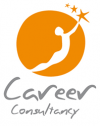33% of 2,000 bosses surveyed by Jobvite indicated they know within the first 90 seconds if they will hire that candidate even though the average length of an interview is 40 minutes. Pretty scary stuff.
These bosses were judging each candidate based on First Impressions, perhaps without even realising it. And, when it comes to First Impressions, 55% of the impression we make on our interviewer comes from our Body Language.
Many of us have heard these statistics before. So, if we all know how important Body Language is, especially in an interview, why don’t we focus on it when preparing?
One of my friends rarely looks at me when I’m chatting to him. His eyes are everywhere except on me. It’s quite disconcerting but I accept it as part of the give and take of relationships.This is not going to happen with a stranger. If you alienate a prospective employer at your interview by not obeying the rules of eye contact, for example, it’s all over red rover.
I have never found any correlation between poor interview Body Language and seniority, so it would be dangerous to think that because you currently hold an Executive role, you have left such mistakes behind. In fact, the standard expected of an Executive is so high that it’s even more critical that you review your ability in this area.
Here are the five most common errors I have encountered as I prepare clients for interviews. Flick through the list of Killer Body Language Errors and make any needed changes in time for your next interview.
Mistake #1: Fiddling
This is quite damaging. Not only does it undermine your authority and presence, it can seriously annoy the interviewer. Here are the culprits that I have come across:
- Clicking the pen
- Flicking the tie
- Twisting the ring or bracelet
- Tugging the coat jacket lapels
- Twirling the strand of hair or (even worse) the beard
What to do instead?
Sit with your arms calmly placed in your lap or on the arms of the chair. This allows you to gesticulate naturally as you deliver your evidence-based answers. (As an aside, I almost always find a direct correlation between fake, stilted language and failure to use the hands. I have concluded that it comes about because there is no emotional element in the language so your body has no natural inclination to get involved.)
Mistake #2: Poor Posture
Long gone are those Victorian times when we were all taught to sit up straight. Posture is something that you’ve possibly never thought of. Here are the common culprits:
- Leaning back in the chair with hands crossed behind your head. This is a glaring error and makes you look quite arrogant
- Another variation is when you slide down slightly in the chair and lean away from the listener. This sends a message that you’d rather be elsewhere and that you don’t want to connect with the other person
- Not quite so bad is leaning sideways. One variation is leaning on the boardroom table. The problem here is that this leaves you only one hand to gesture with and you often end up looking like a ventriloquist’s puppet
- Then there’s the slump. Here you may well be sitting back in the chair, but there is a bend at the waist usually accompanied by rounded shoulders. This makes you look defeated and lacking in authority
- And finally the knees. Very rare, but worth a mention. Crossing one knee over the other leg so that the crossed knee forms an outward triangle is so relaxed that it can be perceived as disrespectful, at least in most office settings
What to do instead?
Place your bottom firmly at the back of the chair, put your shoulders back (though not like a sergeant major) and lean forward slightly.
Mistake #3: Protected Torso
Crossing your arms over your body can be an automatic action if you are feeling uncomfortable. There are 2 variations here:
- Folding your arms sends a range of different messages but they are all negative
- A lesser culprit here is when you have one arm defensively crossed over your torso and the other arm cradling / shielding your face. This makes you look uncertain and insecure
What to do instead?
As mentioned earlier, sit with your arms calmly placed in your lap or on the arms of the chair ready for you to use them.
Mistake #4: Unpleasant Handshakes
Believe it or not, there are rules about handshakes in most societies. They will vary from culture to culture so make sure that you are au fait with those of the culture in which you operate. By the way, the rules here also apply to women, who can be judged just as severely as men for any infraction. Issues to watch out for here include:
- The damp, moist handshake. Say no more
- Extending your arm straight out in front. This sends the message that you want to keep the other person at a distance
- Shrinking the angle of your arm so that you are very close to the other person, possibly invading their personal space
- Misjudging how firmly and how long you should shake the other person’s hand
What to do instead?
Before an interview, you are likely to be nervous. If it’s hot, arrive early and cool down somewhere nearby. Wipe your palm with a handkerchief or tissue.
Look the person in the eye as you shake their hand. Not only is it polite, it is clever as it means that you start to make a personal connection with them. It is much harder for someone to be critical of you once this connection has been established.
A few firm pumps of the hand are sufficient. Not so firm that you crush the hand of the other person, not so weak that you send a shudder down their spine.
Mistake #5: Poor Eye Contact
This is a very common way of ruling yourself out of a job. Classic errors are:
- Failing to maintain eye contact when the other person is speaking. Your role is to maintain 100% eye contact as you listen to someone
- When speaking, failing to hold eye contact for a sufficient period of time before looking away and then re-establishing contact
- Looking down as you pause to construct your next response. The occasional downward glance is fine but if you do this regularly it makes you look quite uncertain
- Flickering and fleeting eye contact. This is quite rare. It suggests extreme shyness and lack of confidence
- Some people have clearly been told in their early years that they needed to improve their eye contact and they over compensate. When speaking, they maintain 100% eye contact so that it turns into a staring competition. This makes the listener feel very uncomfortable and means that they have to then break the rules by looking away
- Failing to look at all panel members as you speak. Generally, you should devote more attention to the person who asked you the question, but also include all others in the room in your gaze
What to do instead?
When listening, it’s very simple: maintain 100% eye contact. When speaking, find the balance and switch smoothly from maintaining to breaking eye contact.
Go Hard, Go Early
I used to think that it was my duty as a caring human being to overlook poor Body Language from someone I was communicating with. Recently, however, there has been an argument put forward that our responses to poor Body Language are not just hard-wired, they’re a relevant tool to help us assess new people we meet.
Regardless of the philosophy, there is absolutely no disputing the importance of mastering good Body Language if you want to win that job.
At a minimum, film yourself as you practise answering interview questions. Any Body Language errors should positively leap out at you. It doesn’t take all that long to eliminate them, in my experience. That way, all of your hard work to deliver interesting, convincing arguments about why you are the ideal job candidate will not be wasted on your decision maker.
Like what you’ve read? Subscribe to our newsletter by clicking here. You’ll be the first to hear about our updates once a fortnight!


